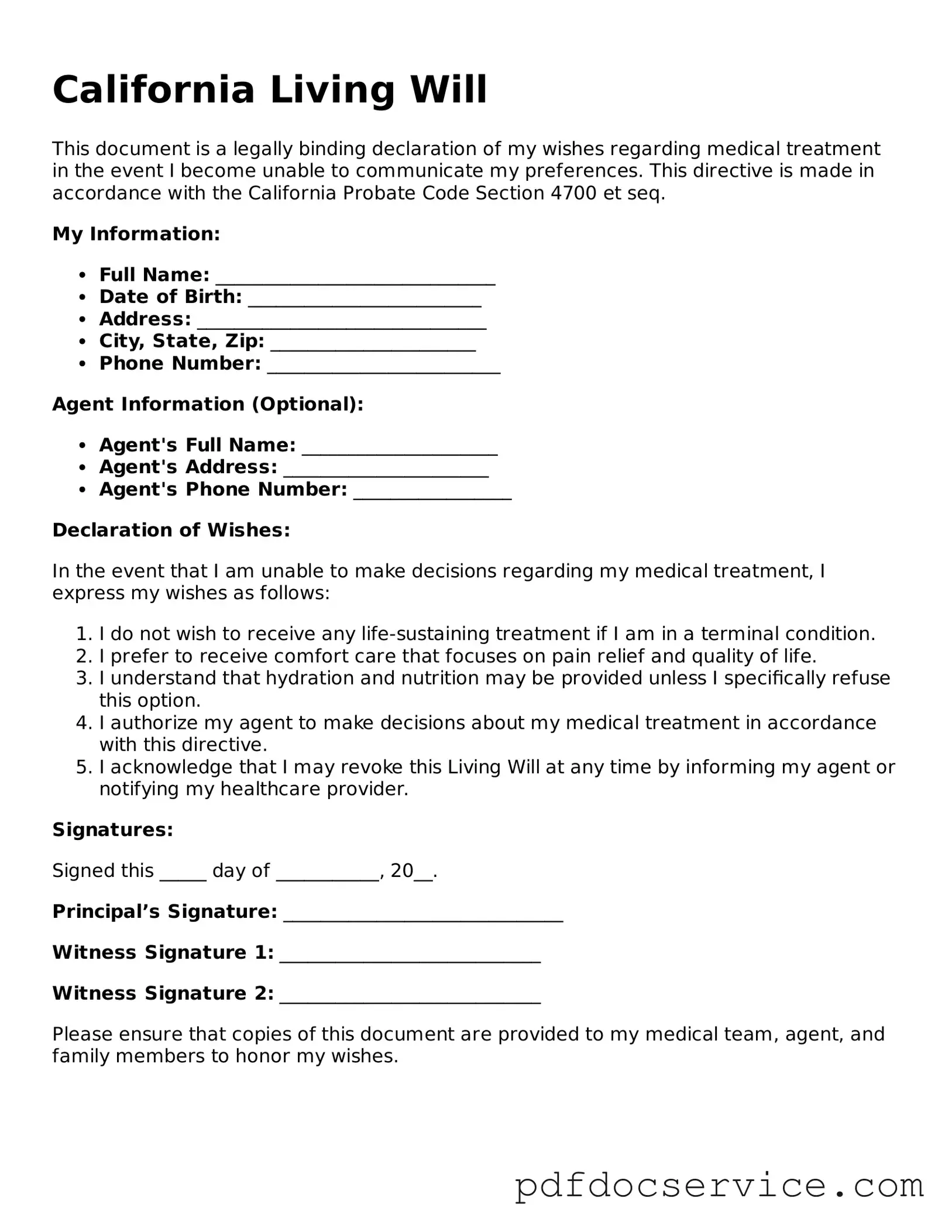Printable Living Will Template for California
A California Living Will form is a legal document that allows individuals to outline their preferences for medical treatment in case they become unable to communicate their wishes. This form ensures that your healthcare decisions are respected, providing peace of mind for you and your loved ones. Understanding its importance can help you navigate tough decisions about end-of-life care.
Open Living Will Editor
